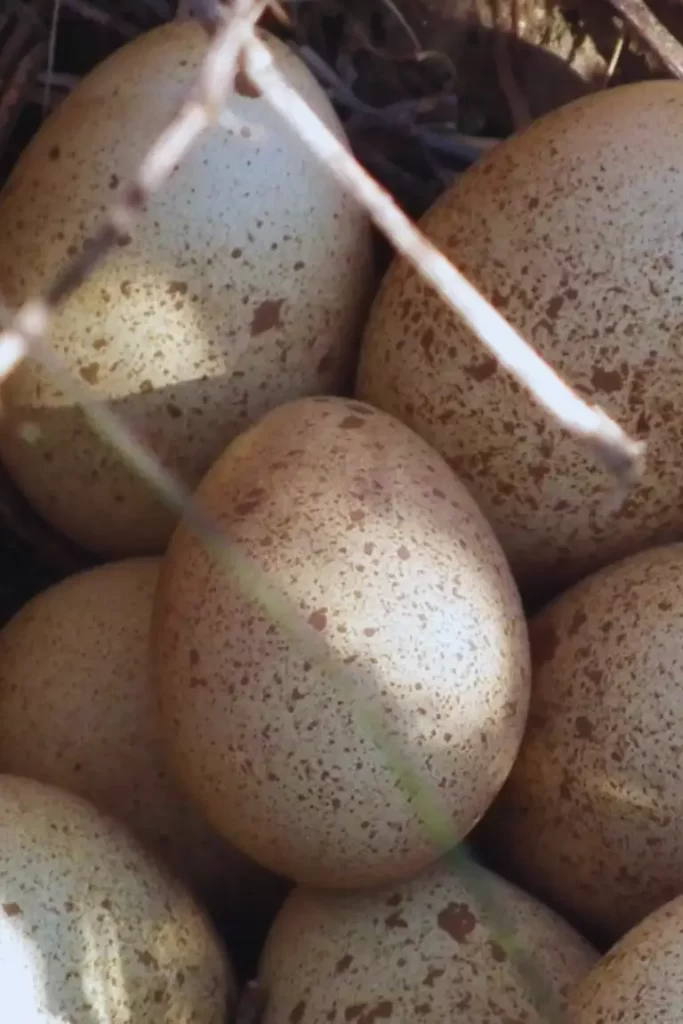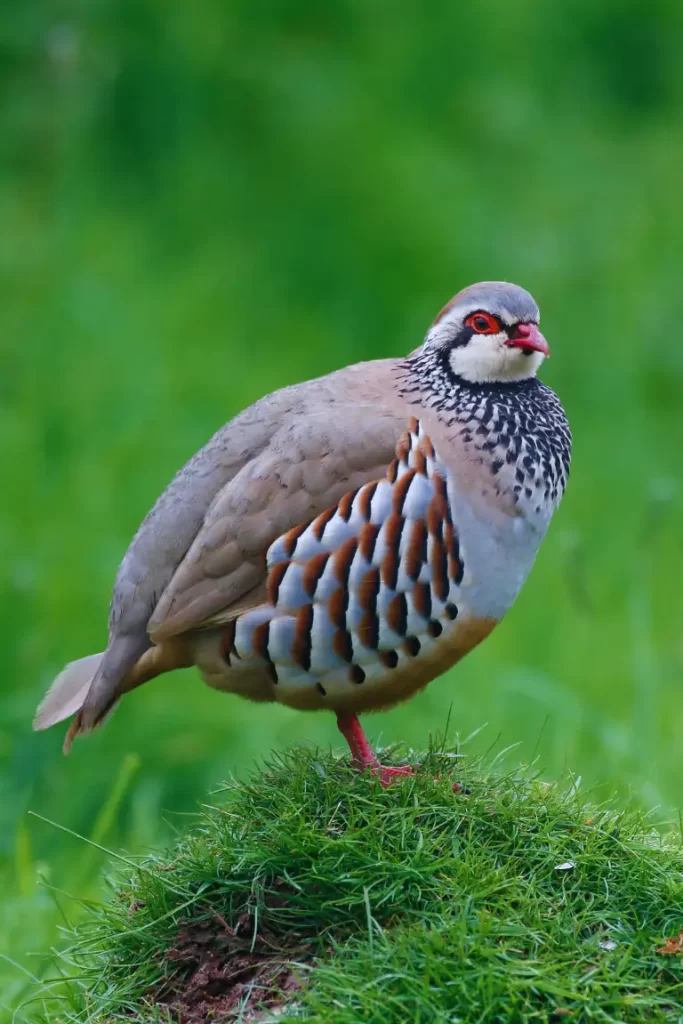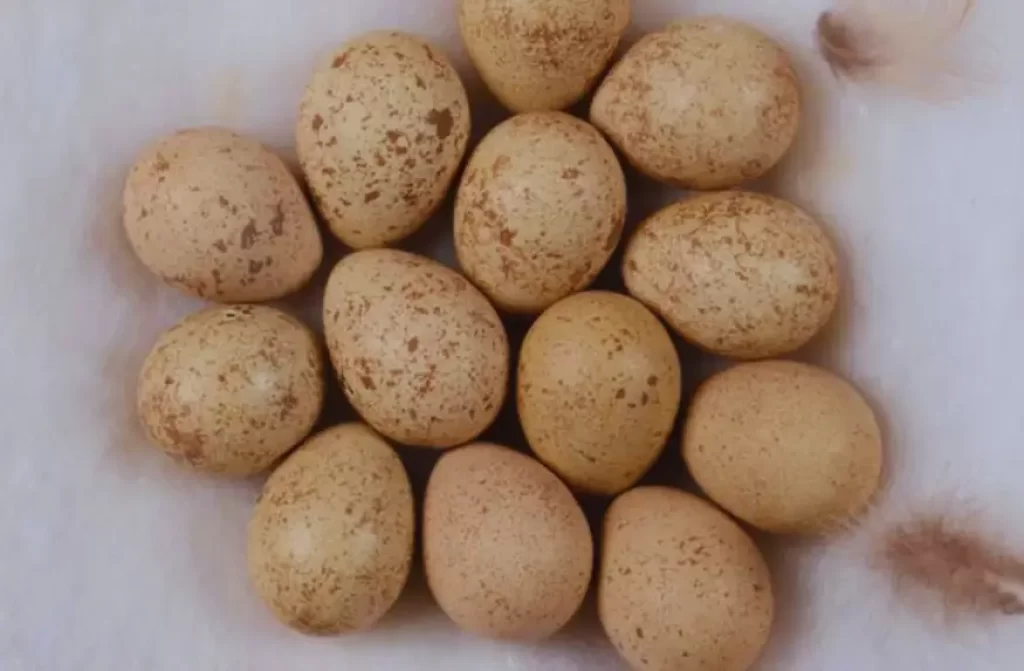The Red-Legged Partridge (Alectoris rufa) is a vibrant and captivating game bird known for its distinctive appearance and lively nature. One of the most intriguing aspects of their life cycle is their reproduction, which involves a series of fascinating behaviors and the production of a specific number of eggs.
The Red-Legged Partridge typically lays a clutch of eggs during the breeding season. The number of eggs in a single clutch can vary but generally ranges from 10 to 20 eggs. On average, a Red-Legged Partridge clutch consists of around 15 eggs.
The large clutch size is an adaptive strategy employed by the species. By laying a substantial number of eggs, the partridge increases the likelihood of successful hatching and offspring survival. This approach compensates for potential losses due to predation, environmental factors, or other egg viability challenges.
In this article, we will explore the reproductive journey of the Red-Legged Partridge, which includes clutch size, nesting behaviors, incubation, and the hatching of cute chicks.
How many Eggs Does a Red-legged partridge Lay?

Clutch Size and Nesting Behaviors
During the breeding season, the female Red-Legged Partridge will lay a clutch of eggs. The number of eggs in a single clutch can vary, but it typically ranges from 10 to 20. The average clutch size is usually around 15 eggs. This large clutch size is an adaptation that increases the chances of survival for their offspring in the challenging and often unpredictable natural environment.
The female Red-Legged Partridge selects a suitable nesting site, often concealed in dense vegetation or under cover, where she constructs a nest on the ground. The nest is carefully crafted using plant materials and provides a secure and cozy environment for the eggs. Once the nest is prepared, the female begins laying the eggs.
Egg Laying and Characteristics

The female Red-Legged Partridge exhibits a remarkable egg-laying process during the breeding season.
She lays one egg per day until the entire clutch is complete. Each egg is carefully deposited in the nest, with the female dedicating her efforts to creating a safe and nurturing environment for her future offspring.
The eggs of the Red-Legged Partridge are typically white or creamy in color, adorned with subtle speckles or markings. These markings serve a crucial purpose, providing effective camouflage and egg protection.
By blending into the surrounding environment, the eggs become less conspicuous to potential predators that may pose a threat.
Combining the egg’s coloration and its speckles or markings demonstrates an evolutionary adaptation honed over generations. This adaptation enhances the chances of survival for the developing embryos within the eggs, increasing their likelihood of successfully hatching and joining the vibrant world of Red-Legged Partridge chicks.
The female’s meticulous attention to nest construction and producing well-camouflaged eggs highlight the species’ adaptation strategies for reproductive success.
These characteristics contribute to the overall survival and population dynamics of the Red-Legged Partridge, a species revered for its captivating appearance and intriguing life cycle.
Incubation and Parental Care

Once the clutch of eggs is complete, the female Red-Legged Partridge embarks on the critical incubation phase.
During this period, the female is primarily responsible for incubating the eggs, ensuring their warmth and protection. However, the male may also contribute by taking over incubation duties intermittently, allowing the female to take necessary breaks for feeding and other activities.
The incubation period for Red-Legged Partridge eggs lasts approximately 23 to 24 days. Throughout this time, the female remains dedicated to her role as a nurturing parent, diligently tending to the eggs within the nest.
She carefully adjusts her body posture and feather position to maximize heat transfer, providing optimal conditions for the developing embryos.
During incubation, the female partridge maintains a vigilant watch over the eggs, safeguarding them from potential harm.
Her instinctive behavior includes carefully regulating the temperature and humidity within the nest, shielding the eggs from extreme weather conditions, and defending against predators or disturbances that may threaten the vulnerable eggs.
The female’s commitment to incubation is vital for the successful development of the eggs.
By maintaining a consistent and suitable environment, she plays a crucial role in the growth and viability of the embryos within. Her unwavering dedication ensures the eggs receive the necessary warmth and protection for proper development and hatching.
Hatching and Early Development:

The eggs hatch once the incubation period ends, and a brood of adorable chicks emerges. Red-Legged Partridge chicks are precocial, which means they are relatively developed and able to leave the nest shortly after hatching.
The chicks are covered in down feathers and have well-developed legs, allowing them to follow their parents and start exploring their surroundings.
The parents play a crucial role in the early development of the chicks. They guide them in search of food, teach them essential foraging skills, and provide protection from potential threats. The chicks grow rapidly during this period, developing their adult feathers and honing their survival instincts.
How many eggs does a partridge lay per year?
The number of eggs a partridge lays yearly can vary depending on the species and various environmental factors. Generally, partridges, including the Red-Legged Partridge, have multiple breeding cycles throughout the year, and each breeding cycle is associated with a clutch of eggs. The specific number of eggs in a grip can also vary.
On average, a partridge species may lay several clutches of eggs per year, ranging from two to six or more, depending on factors such as food availability, habitat conditions, and the overall health and age of the individual bird. Each clutch typically consists of various eggs, with standard ranges being 8 to 20 eggs.
Note that while partridges are known for their ability to lay multiple clutches in a single breeding season, not all eggs may result in successful hatching and survival of the chicks.
Factors such as predation, unfavorable weather conditions, or other environmental challenges can affect the overall reproductive success of the species.
Conclusion
The reproductive journey of the Red-Legged Partridge offers a captivating glimpse into the intricate world of nature’s strategies for survival.
From the vast clutch size to the meticulous nesting, incubation, and parental care, every aspect of their reproductive process showcases the species’ adaptive behaviors and resilience in challenging environments.
If you found this article informative and intriguing, we encourage you to explore other articles on our website. Discover more about the fascinating world of avian reproduction, wildlife conservation, and the wonders of the natural world.







